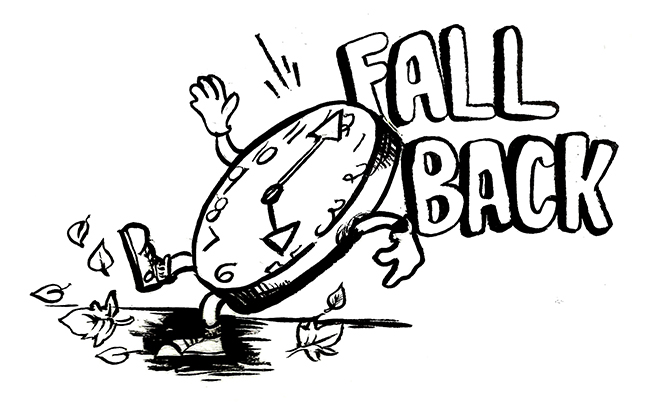Now that it’s time to fall back into Standard Time, people are often too excited to cash in that extra hour of sleep to question the biannual time change. But in March, when it’s time to spring forward with daylight saving time and people lose one hour of precious sleep, they collectively wonder why.
DST was first established during the World War I in an effort to save fuel and dropped shortly after the war ended. People implemented it again during World War II and some states continued to practice DST while others dropped it. Finally, in 1966 President Lyndon B. Johnson signed the Uniform Time Act, making the beginning and end of DST across the country last six months. Since then, Congress has slowly increased the length of time people spend in DST. In 2005, the Energy Policy Act increased DST from seven to eight months.
American citizens often believe they jump into DST every year to save energy and back to Standard Time to adjust to farmers’ daily schedules. An increasing body of research, however, has shown that neither of these reasons hold up. While some studies report small reductions in electricity use during months when Americans adopt DST, more comprehensive studies report an overall increase in energy consumption due to the use of other household appliances such as cooling and air conditioning systems.
The work schedules of farmers around America don’t have much to do with falling back into Standard Time either. Many farmers, in fact, have come to oppose the time shift. Dairy farmers, for instance, say adjusting to the time shift can be difficult for cows, whose milking times are changed to match DST in the spring and again to match Standard Time in the fall. Falling back in November is especially problematic because the cows are forced to hold the milk for longer than they are used to, which can lead to health-related issues.
Similarly, forcing people to modify their own circadian rhythms — the regular twenty-four-hour body cycles that involve sleep — twice a year can have severe adverse effects on their health. People’s sleep duration and sleep efficiency are reduced after the time change into DST, according to a study in Neuroscience Letters. Researchers think interrupting such regular bodily functions can have severe effects on people’s health. Another study in the New England Journal of Medicine, for instance, found there is an increased risk of heart failure during the three weeks after the change into DST and during the first week after the change back to Standard Time.
Most pieces of legislation that have attempted to get rid of time change have come about in the spring and proposed to get rid of DST. Arguments to terminate DST, beyond those that oppose the time change itself, include the fact that schoolchildren need to wait for school buses in the near-dark when dawn comes one hour too late.
But bills that have tried to do away with DST have met heavy resistance. Many people take advantage of an extra hour of daylight and outdoor activities during summertime and don’t like the idea of losing it to permanent Standard Time. Texas State Rep. Dan Flynn (R-Canton) tried to introduce a bill last spring that would have kept the state from following the scheduled time change. If it had passed, Texas would have stayed in Standard Time throughout the year, much like Arizona. Ultimately, too many people spoke up against the bill.
Groups that lobby in favor of DST, such as industries that sell and manufacture gear for outdoor activity, often hope to put the extra hour of daylight during DST to good use. DST means people who work a standard day shift get more daylight after work during which they can engage in outdoor leisure activities, such as trips to the mall, barbecues and golf.
Until people agree on the benefits and setbacks of DST, people will have to live life in darkness — at least for an extra hour.















